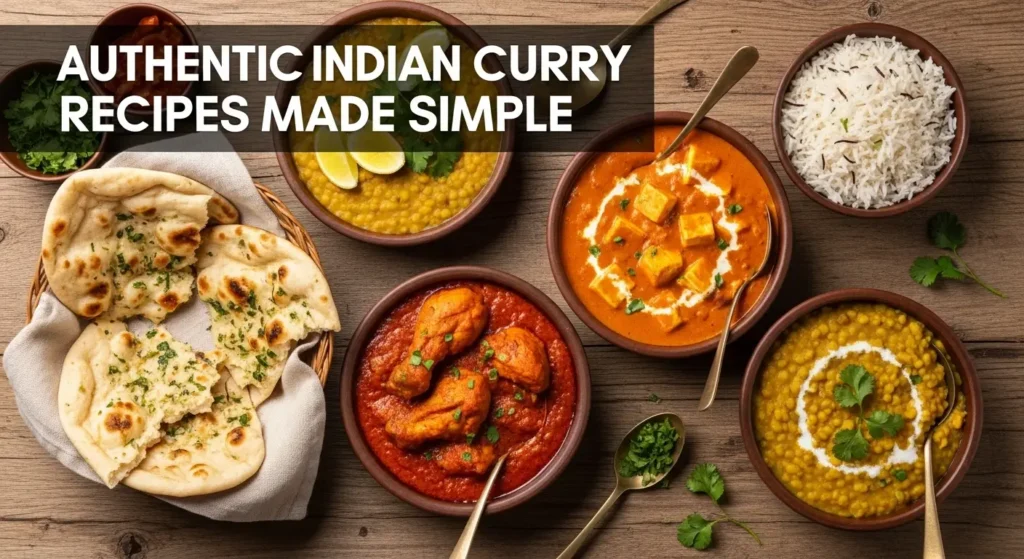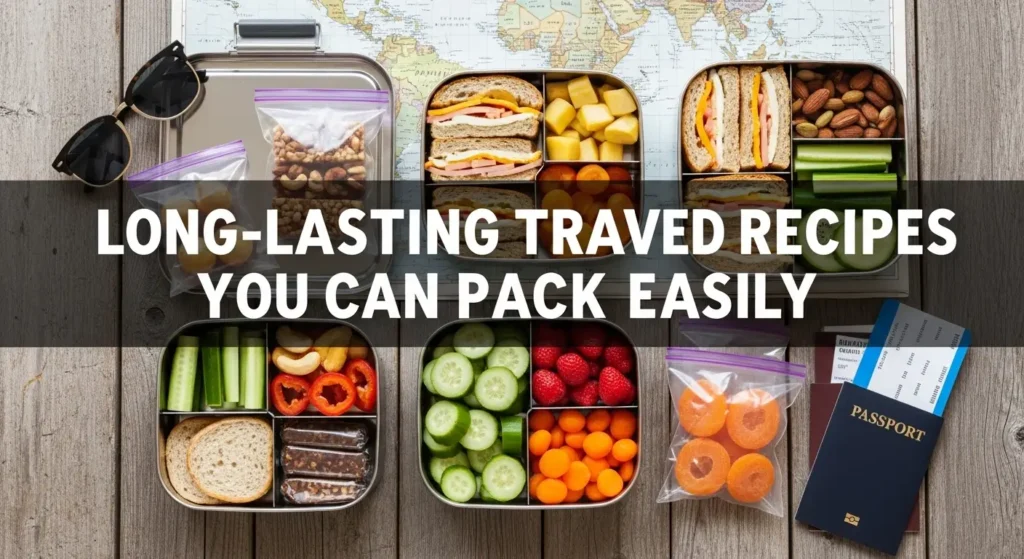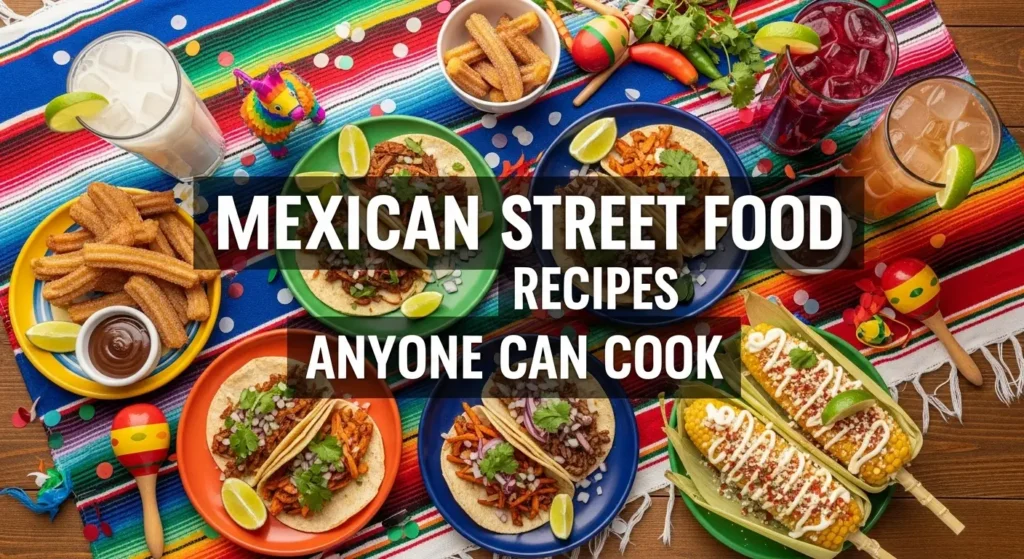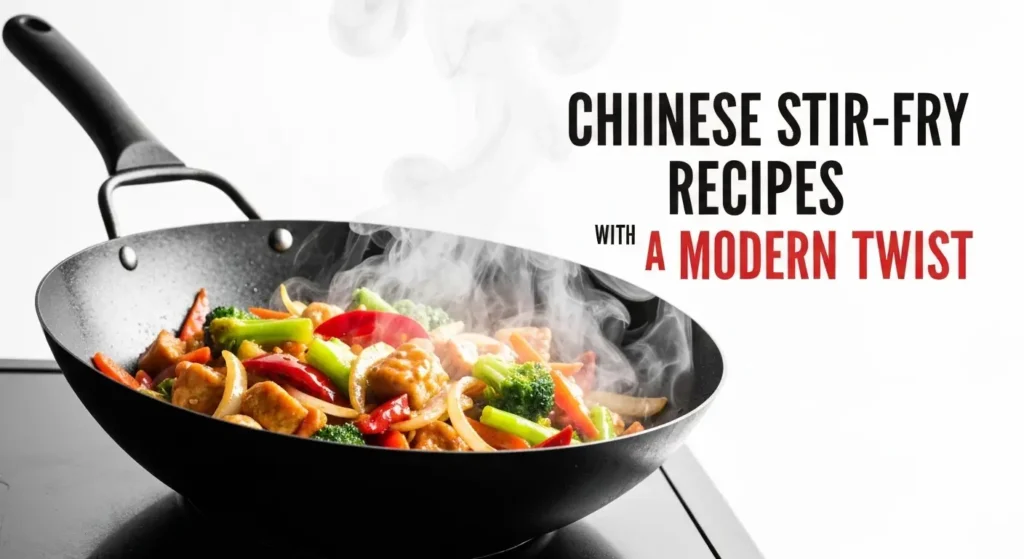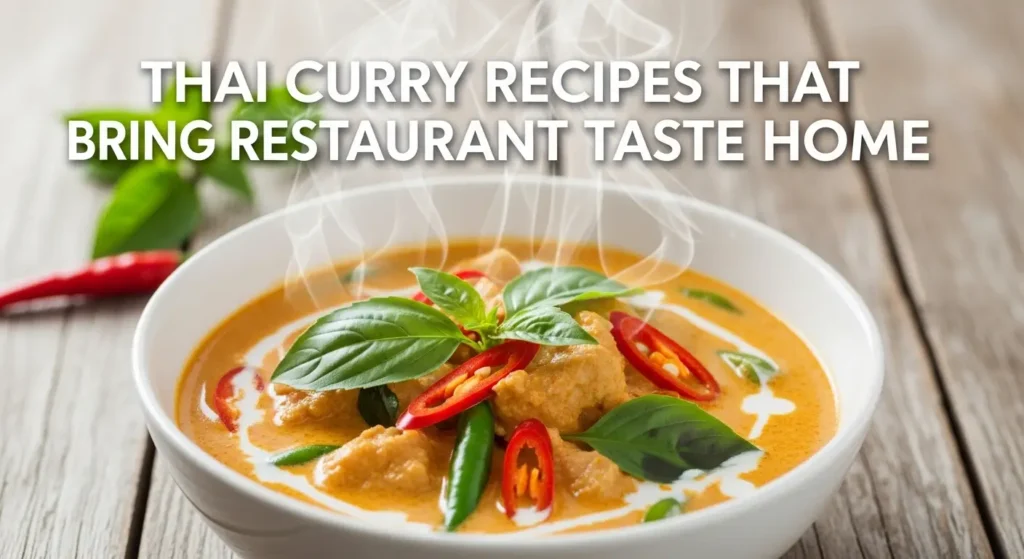Few cuisines in the world can rival the spices and flavors of Middle Eastern recipes. From the smoky aroma of grilled kebabs to the earthy comfort of lentil soups and the sweetness of baklava, Middle Eastern food tells stories of history, culture, and community.
What makes this cuisine truly special is its generous use of spices and herbs. Ingredients like cumin, coriander, sumac, turmeric, cinnamon, and cardamom transform simple ingredients into soul-satisfying meals. Combined with olive oil, garlic, fresh herbs, and grains, they create a harmony of flavors that is both exotic and comforting.
If you’ve ever wanted to recreate these dishes at home, you’re in the right place. In this guide, we’ll explore traditional Middle Eastern recipes, key spices, cooking tips, and easy-to-follow ideas that will help you bring authentic flavors into your kitchen.
The Magic of Middle Eastern Spices
Common Spices Used in Middle Eastern Cooking
Middle Eastern cuisine thrives on bold spice blends. Here are some of the most popular ones:
- Cumin – Adds earthy warmth, perfect for stews and grilled meats.
- Sumac – Brings a lemony tang to salads and meats.
- Cinnamon – Used not only in desserts but also in savory dishes like lamb tagine.
- Turmeric – Provides a golden hue and subtle bitterness, often used in rice dishes.
- Cardamom – Adds fragrance to coffee, tea, and sweets.
- Za’atar – A blend of thyme, sesame, sumac, and salt, often sprinkled on bread or meats.
- Baharat – A spice mix that combines paprika, cloves, nutmeg, and more for complex depth.
Why Spices Matter
In Middle Eastern cooking, spices do more than add flavor. They:
- Preserve food naturally (important in hot climates).
- Aid digestion with herbs like mint and cumin.
- Create balance between savory, sweet, sour, and spicy notes.
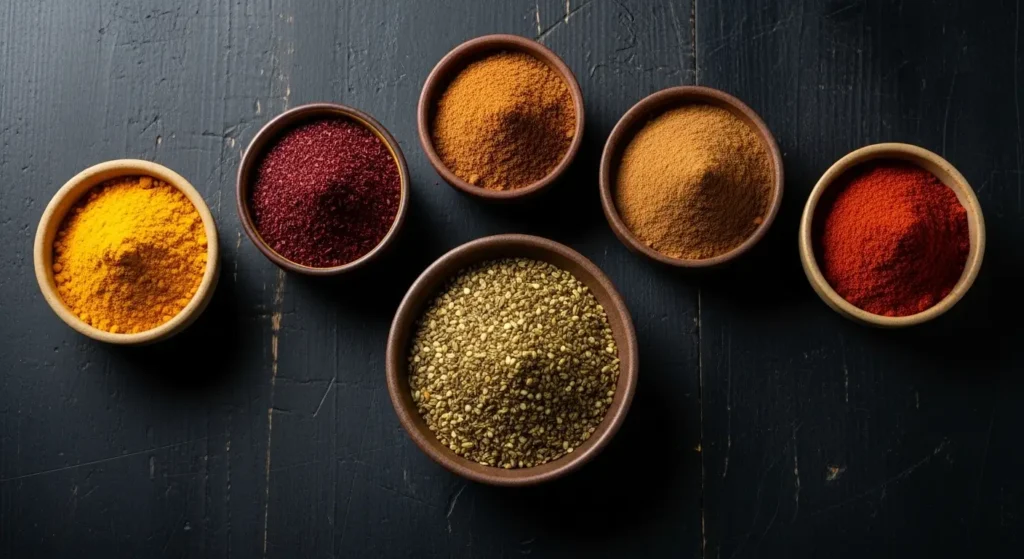
Classic Middle Eastern Recipes to Try
1. Hummus – The Iconic Dip
Hummus is one of the most beloved Middle Eastern dishes worldwide. This creamy spread is made from blended chickpeas, tahini, olive oil, lemon juice, and garlic.
Tips for the Best Hummus:
- Use warm, freshly cooked chickpeas for extra creaminess.
- Add ice-cold water while blending to achieve a smooth texture.
- Garnish with paprika, olive oil, and fresh parsley.
2. Falafel – Crispy Chickpea Fritters
Falafel is a street-food favorite. These crispy balls of ground chickpeas, herbs, and spices are fried to golden perfection and often served in pita bread with tahini sauce.
Key Flavorings:
Also Read: Easy Mediterranean Chickpea Salad Recipes for Beginners
- Fresh parsley and cilantro for brightness.
- Cumin and coriander for depth.
- Baking soda for lightness.
Serving Ideas:
- In pita pockets with pickles and salad.
- On a mezze platter with hummus and baba ganoush.

3. Shawarma – Spiced Meat Wraps
Shawarma is marinated meat (chicken, lamb, or beef) cooked slowly on a vertical rotisserie. At home, you can recreate it with oven-roasted or grilled meat.
Shawarma Spice Blend:
- Paprika
- Cumin
- Coriander
- Cinnamon
- Garlic powder
Serve in pita bread with garlic sauce, pickled cucumbers, and lettuce for an authentic experience.
4. Lentil Soup (Shorbat Adas)
This hearty soup is a staple in Middle Eastern homes, especially during Ramadan. It’s made with red lentils, carrots, onions, cumin, and turmeric, creating a vibrant golden soup.
Why You’ll Love It:
- Healthy and protein-packed.
- Quick to cook (lentils soften fast).
- Freezes well for meal prep.
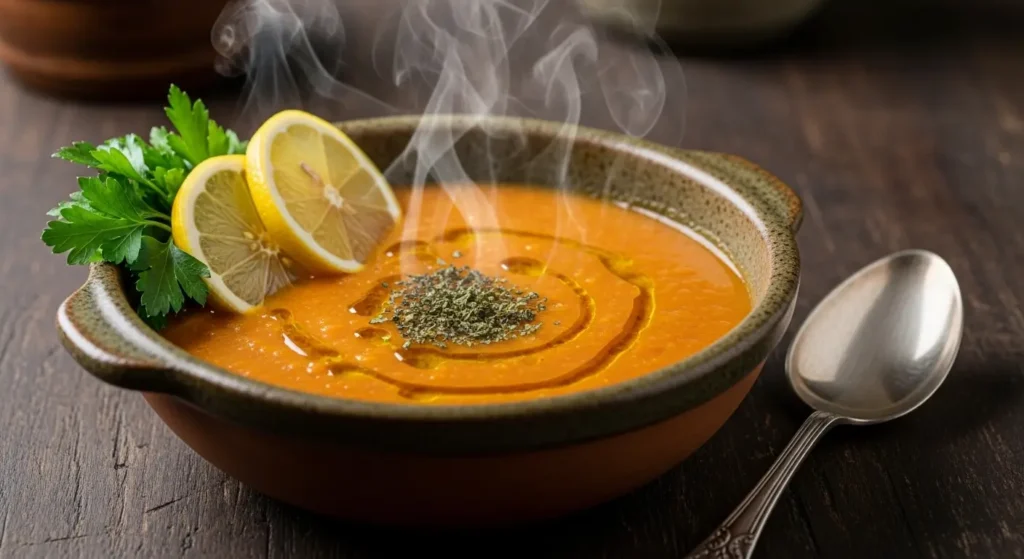
5. Baklava – Sweet Layered Pastry
Baklava is a classic Middle Eastern dessert made of layers of filo pastry, chopped nuts, butter, and honey syrup. Its flaky, sweet, and nutty flavor makes it a celebratory dish.
Flavor Tip: Add cinnamon and cardamom to the nut mixture for extra depth.
Regional Differences in Middle Eastern Cooking
Levantine Cuisine (Lebanon, Syria, Jordan, Palestine)
- Famous for mezze spreads (hummus, baba ganoush, tabbouleh).
- Light, fresh flavors with plenty of olive oil and lemon.
Persian Cuisine (Iran)
- Known for saffron rice, kebabs, and stews (ghormeh sabzi).
- Sweet and savory balance with pomegranates, dried fruits, and nuts.
Turkish Cuisine
- Blends Central Asian and Mediterranean flavors.
- Dishes like köfte, baklava, and döner are widely enjoyed.
North African Influences (Morocco, Egypt)
- Tagines, couscous, and harira soups are staples.
- Heavy use of warming spices like cinnamon, turmeric, and ginger.
Tips for Cooking Middle Eastern Food at Home
Stock Your Pantry with Essentials
- Chickpeas and lentils
- Tahini
- Olive oil
- Pita bread
- Yogurt
- Dried fruits and nuts (dates, figs, pistachios)
Cooking Tips
- Toast spices before use – It enhances their aroma.
- Balance flavors – Pair tangy lemon with earthy cumin, or sweet dates with savory meats.
- Use fresh herbs – Mint, parsley, and cilantro brighten dishes.
- Don’t rush – Many Middle Eastern dishes rely on slow cooking for depth.
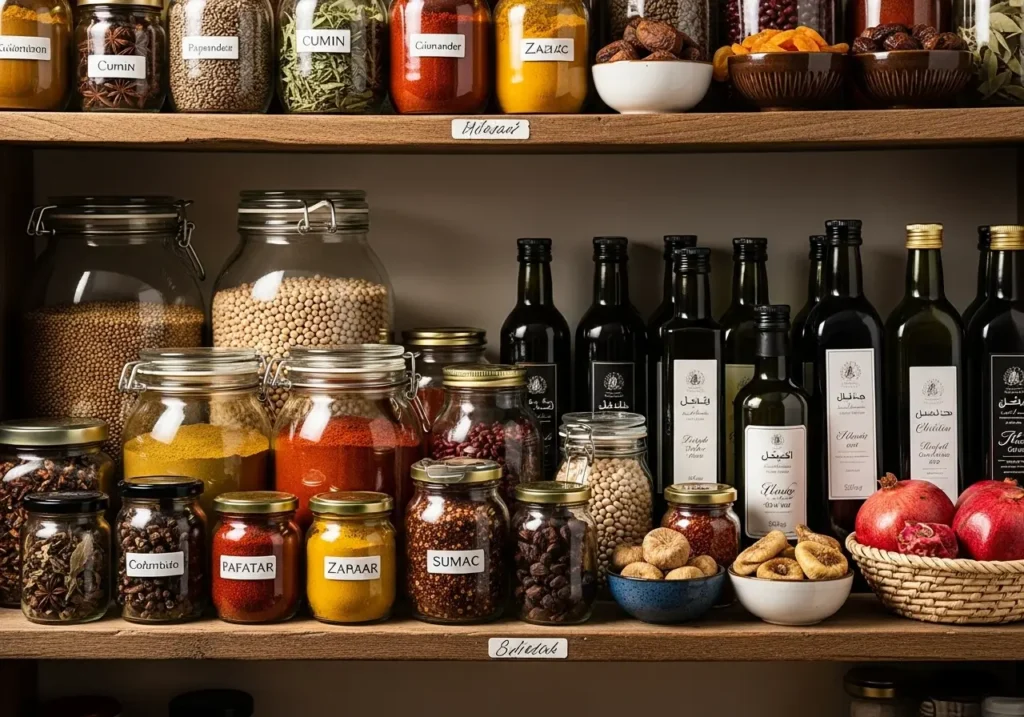
Key Takeaways
- Middle Eastern recipes are all about spices and flavors that create depth and richness.
- Essential spices include cumin, sumac, turmeric, and za’atar.
- Classic dishes like hummus, falafel, shawarma, and baklava are easy to recreate at home.
- Regional cuisines—from Levantine to Persian—offer unique twists on flavor.
- Stocking your pantry with essentials makes Middle Eastern cooking simple and rewarding.
FAQs about Middle Eastern Recipes
1. What are the healthiest Middle Eastern dishes?
Lentil soup, tabbouleh, and grilled kebabs are nutritious and packed with protein, fiber, and vitamins.
Also Read: Easy Italian Pasta Recipes for Beginners
2. Can I make Middle Eastern recipes vegetarian?
Yes! Many dishes like hummus, falafel, baba ganoush, and tabbouleh are naturally vegetarian.
3. What is the difference between shawarma and kebab?
Shawarma is thinly sliced, spiced meat often served in wraps, while kebabs are skewered meats grilled or roasted.
4. Which bread is commonly used in Middle Eastern cuisine?
Pita bread and flatbreads like lavash and khubz are most popular.
5. What drinks pair well with Middle Eastern food?
Mint tea, Turkish coffee, and ayran (a yogurt-based drink) are traditional favorites.
Conclusion
Middle Eastern recipes with spices and flavors are more than just food—they are a celebration of culture, family, and tradition. By stocking your pantry with key spices and learning a few classic recipes, you can bring the authentic taste of the Middle East into your home.
Whether you’re preparing a simple hummus dip or an elaborate baklava, every dish tells a story. So, try these recipes, experiment with spice blends, and enjoy the richness of this timeless cuisine.

